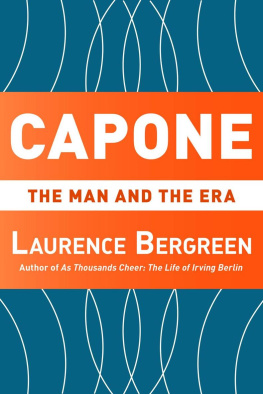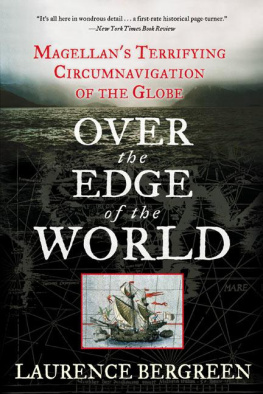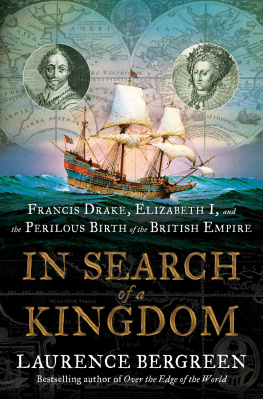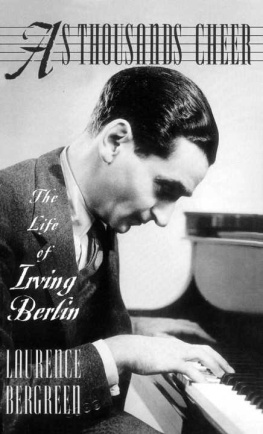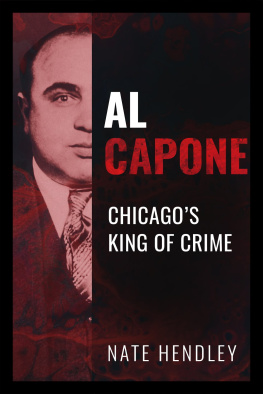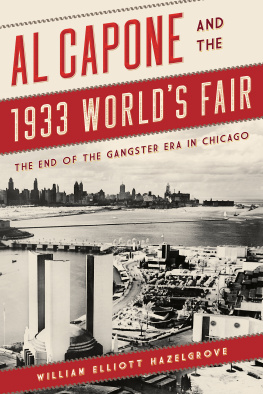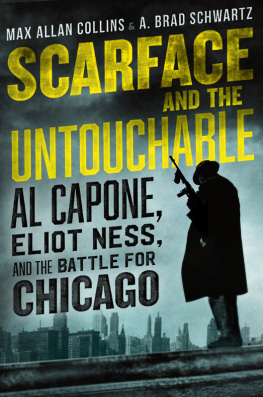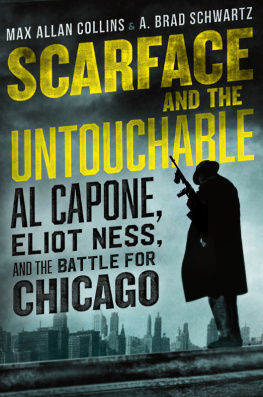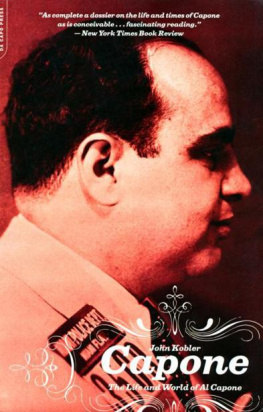Thank you for downloading this Simon & Schuster eBook.
Join our mailing list and get updates on new releases, deals, bonus content and other great books from Simon & Schuster. CLICK HERE TO SIGN UP or visit us online to sign up at
eBookNews.SimonandSchuster.com

Contents
To Betsy, Nick, and Sara
and
To my mother and father
The evil that men do lives after them,The good is oft interred with their bones. Julius Caesar, Act III, sc. ii.
ALPHONSE CAPONE
Family Tree


Prologue
ALL I KNOW about Al is that he was extremely kind to me and my family, especially my mother. He just loved my mother to death. Many a time hed see her and say, Hi, Mom, how are ya? put his arm around her and kiss her, and when he walked away shed have money in her hand, in her pocket. Thats the way he was. In my experience with him there was nothing but kindness.
He bought me my first bicycle. He said to me, Did you go down to the sporting goods store? I said, No. He said, Well, go down there. Theyve got something for you to pick up. So I went, and there was a brand new bike waiting for me. I was young. Rode it home. And he was sitting on the porch waiting for me. He had a grin from ear to ear. Then he rode the damn bike half the afternoon.
Of course, anytime anything went wrong in Chicago, the newspapers had to have someone to blame. The police had to have someone to blame. But they were never able to pin anything on him. Can you imagine standing seven guys against the wall and running a machine gun and killing all of them? Youd have to be crazy, right? Got to be doped up, no matter what kind of enemies they are. That St. Valentines Day Massacre was the worst thing that ever happened in Chicago as far as racketeering went.
Anyone ever needed any help who went to him, they got it. He helped those old people in Chicago, those old Italians during the Depression. If it hadnt been for him, half of them would have been on welfare, or worse, but he always had ways of helping them earn a dollar. He never let anyone think he was just giving them something. Hed say, Ill rent your garage. I may need it. Or, Ill rent your basement. I may need it. Never using it, but he would pay them anyway. In those days back in Chicago hed pay em $75 a month; it was a lot of money back in 1930. He was just that way. During the Depression he even ran soup kitchens in Chicago. He fed many and many a bum. I dont know what he gained by being kind to those kind of people because they couldnt do anything for him; he was doing it for them. But thats the kind of individual he was. He just liked people.
He always urged me to stay straight. What convinced me was the time we were coming home from the Strand movie theater in Lansing, Michigan. He used to love to get me in the theater and hand me a package of gum. I chewed like crazy watching the movies, see, and hed say, Ive got old Snorky here. Hed call me by his own nickname. Anyway, were walking down the streetmyself, Al, Frank Nitti, and Jack McGurn. McGurn was a hell of a golfer, you know; he could have been a pro. So were just walking down the street on a summer evening coming home from the movies, but as we passed this place, this home, we stopped.
The window shades were all up, the lights were on, and there was a family sitting there having dinner. And he says to me, Boy, what I wouldnt give to be able to sit with my family with the shades up like that, eating dinner. He says, Boy, dont you ever get involved in this kind of life. If you do, and Im alive, Ill personally kill you.
That was impressive to me because with all the money he had and all the people around him, his life really wasnt his own. He always had to be on guard, always had to watch. Couldnt even have his hair cut or a shave. The barber had to come to him. Every time they went to a restaurant they practically took it over. Always sat near a window so there was an easy escape if they had to. If you think the president has security it was nothing compared to this. It was always two or three bodyguards in front and a couple on each side and two or three in back. That was a hell of a life....
Anthony Russo
. A pseudonym.
Part One
PURSUIT
CHAPTER 1
Campanilismo
HE WAS ATAVISTIC, flamboyant, impossible to ignore. A big fat man with a cigar and a $50,000 pinkie ring. A jowly smiling Satan nearly six feet tall, with two scars across his left cheek. He weighed over two-fifty, yet despite his bulk and the sloppy grin, he could move with lethal speed and force. Not an articulate man, he was nonetheless charismatic: warm, charming, generous. A big tipper. He attempted elegance with an outrageous wardrobecustom-tailored suits of purple, electric blue, or yellow; pearlgray fedoras accented by a black band; and diamond-encrusted stickpins. He liked people, wanted them to adore him, and people gravitated toward him, they applauded him, sought his autograph, and as he excused himself as a businessman or a rogue, he submitted to their hero worship and condemnation.
His name was Al Capone, and he was, according to the New York Times on the occasion of his death, January 25, 1947, the symbol of a shameful era, the monstrous symptom of a disease which was eating into the conscience of America. Looking back on it now, this period of Prohibition in full, ugly flower seems fantastically incredible. Capone himself was incredible, the creation of an evil dream.
Incredible. Fantastic. Ugly. Evil. In harsh, censorious language the obituaries attempted to explain, condemn, and, perversely, revel in his life and career. They informed the public that Alfonso Caponi had been born in Naples in 1895, as if no American lad could ever grow up to be so evil. They evoked his apprenticeship to crime in Manhattans Little Italy, in particular, a neighborhood known as the Mulberry Street Bend; reproduced his draft card; mentioned his service during the Great War as part of the French Lost Battalion and described the duelthough some accounts referred to shrap nelwhich gave him the two famous scars across his left cheek. They confided that his nickname was Scarface; explained that the young Capone fled a murder rap in New York and arrived in Chicago one step ahead of the police to work for his cousin Johnny Torrio, vice lord of that city. They portrayed him as the mastermind behind the notorious St. Valentines Day Massacre on February 14, 1929; in some accounts he even wielded a machine gun himself. They gave as the cause of his death pneumonia or a stroke, or a combination of the two; and, finally, they unanimously claimed his death marked the end of an era of gangsters and murder in Chicago and around the country. Thus his life became a paradigm of the gangsters progress in America.
However, nearly all of this endlessly repeatedand generally acceptedinformation was erroneous, beginning with the time and place of his birth. So, too, was the story of his military service in the Great War; the often-reproduced draft card actually belonged to another Al Capone, a butcher who resided in New Jersey. The manner in which he received his scar was similarly falsified and romanticized, as was his real nickname (Scarface was strictly for the movies and newspapers), the true cause of his death, even the correct spelling of his name. Nor did his demise mark the end of gangland, as his moralizing obituaries predicted; powerful racketeers followed Capone as surely as they had preceded him. You who only know him from newspaper stories will never realize the real man he is, his younger sister, Mafalda, publicly stated, but her words fell on deaf ears or met with outright derision; was she not blinded by family loyalty? And then there were the movies and later the television programs inspired by his career, which served to increase the confusion surrounding his deeds and reputation, since these dramatizations endowed characters engaged in largely fictional exploits with the names of real people. Ultimately, the Al Capone who became familiar to Americans is a myth: a poisonous but intoxicating blend of the shrill yellow journalism of the 1920s, Hollywood sensationalism, and pervasive anti-Italian prejudice. These multiple distortions transformed Capone into a larger-than-life symbol of evil.
Next page
